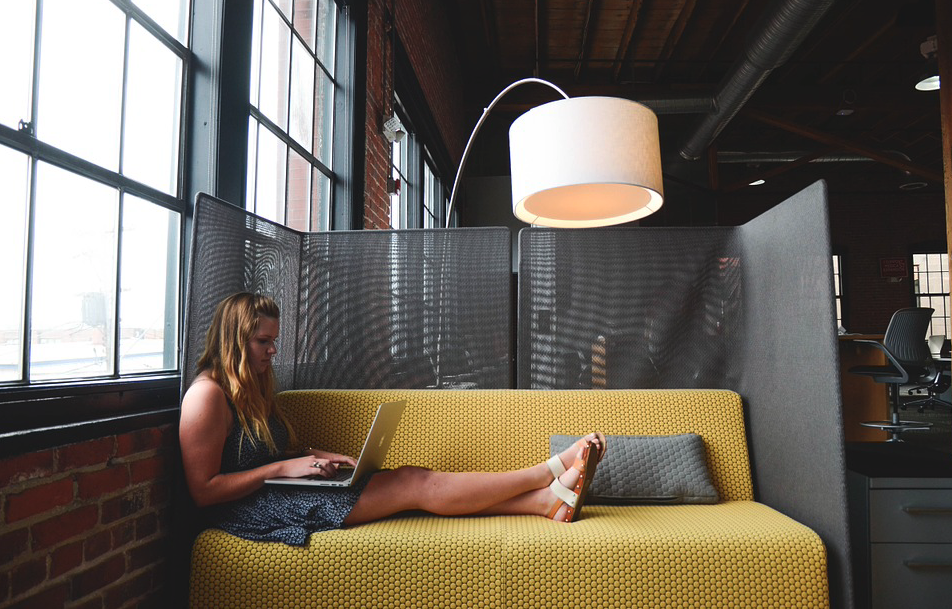Working From Home: Posture and Ergonomics

Remember the days when wearing a mask as you walked into a bank was a bad thing? Now you’re asked to leave if you don’t have one. There’s no doubt that the Coronavirus pandemic has changed a lot of things. If you’re one of those people working from home these days, those changes are readily apparent. You may miss the human interaction, the banter with your coworkers or the sense of camaraderie that just can’t be replicated with a sterile Zoom call. On the other hand, you probably don’t miss those brutal morning commutes. There’s something to be said about spending the day in your living room in your pajamas and still being productive.
With so many people working on their couch or lying on their living room floor, good posture and good ergonomics have never been more important. It’s all too easy to forget if you’re propped up in bed, with your tablet or laptop in hand.
Ideally you shouldn’t work this way, at least not for long periods of time. Your couch may look comfortable, but it’s far from an optimal place to spend your workday. Having your body horizontal all day can lead to numbness in your legs, tightness in your back and more muscle strains than you care to count. Instead find yourself a table or desk at the right height as well as a good chair with the proper amount of back and hip support. You want your feet to be able to comfortably touch the floor. Your thighs should be parallel to the floor. Your monitor should be positioned so that you can easily see it, but also at such a height that your chin is parallel to floor and your eyes naturally come to rest on the center of the screen. Whatever you do, resist the urge to hunch over your laptop.
If you’ve worked in front of a computer screen for hours at a time, you’ve probably started to get a little bleary-eyed. There’s a reason for that: your eye muscles weren’t designed for it. Whenever possible try to follow the 20/20/20 rule. It won’t give you 20/20 vision, but it may save you some headaches. Basically, for every 20 minutes you spend staring at the computer screen you’ll want to spend at least 20 minutes staring at something else at least 20 feet away. It gives your eyes a chance to relax.
The great thing about working from home is that you don’t have to share your workspace with coworkers. That means you can customize it to suit your every need. Take the time to think about each movement you make and design your space so that each of those movements is as comfortable and easy for you as possible. It might take a few minutes, but it will be well worth your time.
You’re working from home and trying to be as productive as possible, but remember also to take care of yourself. Stay hydrated, give yourself plenty of rest and make sure to take a break now and then. Go for a short walk around the house. Just get up and move around. A few minutes of movement can do wonders for clearing your mind and preventing some unexpected aches and pains.
Good work habits are important, regardless of where you are. The pandemic may have changed how we work, but good posture and proper ergonomics can make your life easier and more comfortable no matter where the job takes you.